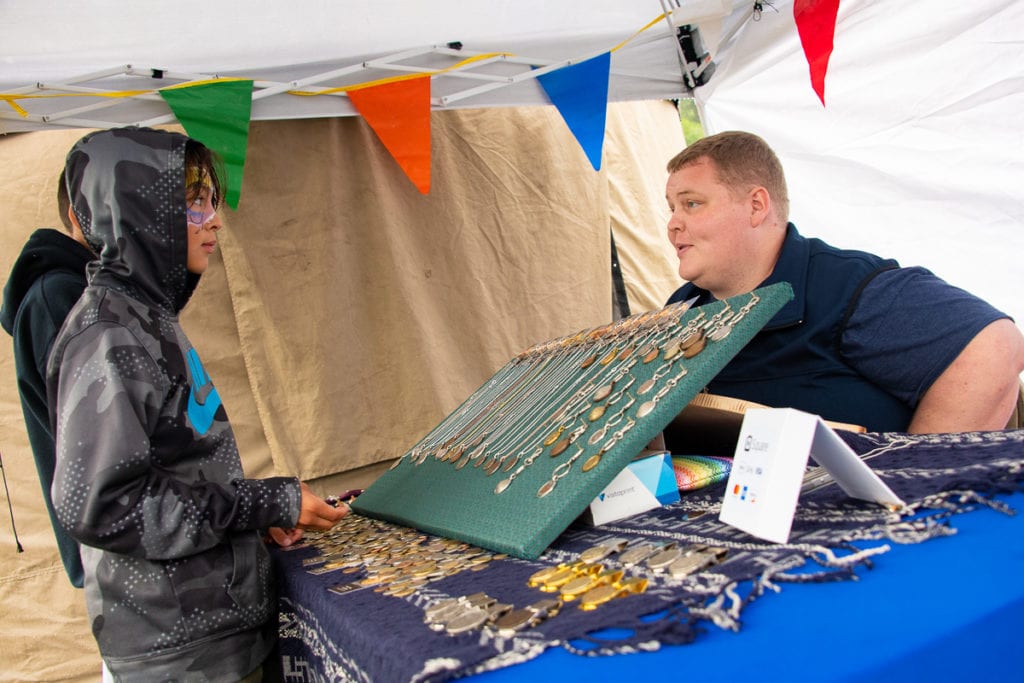
Cordova’s small businesses are adept at turning a profit, but Russell Minor may be the only businessman in town clever enough to sell a nickel for $20. As the owner of Minor Thingz jewelry, Minor takes pennies, pesos, francs, kopeks and shekels, turning them into earrings, tie clips, rings and keychains.
Minor’s love affair with coins began in Argentina, where he volunteered with the Church of Jesus Christ of Latter-day Saints from 2013-2015. Passing by a street vendor in Buenos Aires, Minor’s eye was caught by the shine of a 1970s Argentine peso, a brass-jacketed coin that gleams like gold when polished. The 1970s Argentine peso displays a sun with a cherubic human face, unlike the standard profiles of jowly statesmen found on many coins.
“Why do they put a bunch of old, ugly dudes on the front of every coin?” asks Minor. “It’s just something that the world seems to do with their coins. My favorite types of coins are coins with animals on them, iconic symbols or the sun, which is one of my favorites.”
Buffalo nickels, the right size and heft for earrings, are usually hot sellers on July 4. And, of course, Cordovans are likely to flip over any coin featuring a fish design. Using electroplating, Minor is able to add copper accents to coins so that bears, eagles and fish pop against the silver background. A protective coating is also necessary to prevent some coins from corroding in Cordova’s moist, salty atmosphere.
This year, Minor opened a booth at Salmon Jam for the first time, leading with a collection of jewelry and loose coins. Most popular were earrings made from Irish coins featuring copper-accented salmon.
Coins don’t lend themselves to jewelry just because they’re small and shiny, says Minor. Coins are a record of culture, history and ideology. While a long-running government may stamp its coins with images of its founders, a recently installed dictator may put his own face on currency in order to prop up a cult of personality.
“It’s fascinating how you can find common ground with someone just by having a conversation piece around,” says Minor. “I’ve met any number of people who have also been to Argentina, but it’s hard to get to that conversation without a simple conversation piece.”
Some coins Minor picks up while traveling, but many he buys in large random-coin lots on eBay. Most coins from these lots are too ugly or too worn to be useful as jewelry, but there is the occasional gem, like the pair of 1891 Argentine one-cent pieces Minor turned into a money clip and a pendant.
Minor hopes that his jewelry will encourage customers to take a closer look at coins. American currency, he reflects, is densely packed with symbolism that few Americans understand.
“How often do we even pay attention to what’s on our quarters as we’re spending them down at the store?” asks Minor. “What does that eagle symbolize? What is it holding? Do we know that? Take a look at your coin. Try and find out what it means — you might be surprised.”





